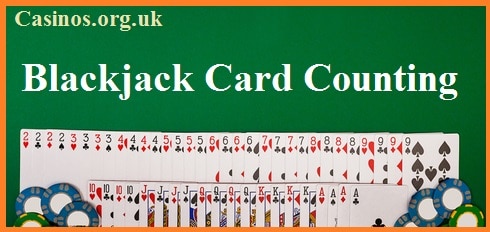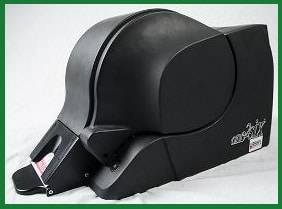Blackjack Card Counting

Looking at Blackjack Card Counting
Table of Contents
Blackjack has always been surrounded by the stigma of card counting. It is a subject that will always go hand in hand with the game of Blackjack wherever you go thanks to its inventor and book writer. Dr. Edward O. Thorp.
One myth that must be crushed is that card counting is easily done. So often you hear claims of people who say they love Blackjack and make loads of money out of it because they are card counters. Most of the time this just complete BS. If we were all able to card count as easy as that, then we would all be at it.
It took a whole MIT team of super intellectual students and a brain box mathematician to figure it out, which sadly although we would all like to think so, many of us are not in the same league of these geniuses recruited for their extraordinarily brilliant minds.
The MIT card counting team
Many will conjure up the most well-known story of the MIT team put together by Bill Kaplan and John Chang in order to conquer the tables in the Blackjack tables in the USA with a card counting team.
A few decades later made it to the big screen in the film 21 starring Kevin Spacey (Mikey Rosa), , Kate Bosworth (Jill Taylor), Jim Sturgess (Ben Campbell) and Laurence Fishburne (Cole Williams).
Coincidentally enough, some of that MIT team are now professional poker players; such as, Andy Bloch.
Is card counting illegal?
This is the big question for all to ask. Card counting is not illegal at all because it is not cheating. The only reason casinos can eject someone and ban them from their casino is not because they have been cheating.
Nonetheless, because the casino is a private business and has the right to ban anyone from their property for whatever reason they see fit, and one of those reasons is card counting.
Effectively, card counting is a form of using mathematical analysis to win at Blackjack, which is exactly what the MIT team’s mission was.
The casinos have several tactics to throw off card counters and pit bosses and dealers react in different ways when they realise someone is counting cards. Some will realise you are counting and immediately shuffle the deck, and other will throw you out of the casino.
In the end, the players is allowed to use any legal tactic possible to win, and the casinos can use any form of deterrent they can to put card counters off.
One of these deterrents is to wait for the big bet from the player, and then shuffle the cards so the player has no advantage then play that hand out against the player. A loss for the casino is usually negligible to the casino in the whole scheme of things in this situation, but can be divesting to a player.
Why is card counting possible?
If you take a simple game of Roulette and spin the wheel, it really doesn’t matter which number the roulette ball land on it will not affect the next spin in any way. The same principle applies to dice. You can roll an 8, but it does not affect the next roll of the dice.
Blackjack is different, or at least it used to be before selective shuffling, RNGs and CRMs came to the tables.
Back in the day, before online Blackjack and before pit bosses ordered dealers to shuffle more frequently, the shuffle was not that regular at all. This is why card counters were able to spot the best times to increase their bets and when to only bet the minimum.
As the decks were consistent, when low cards came out (which you will later find it is advantageous to the dealer) versus when high cards were left in the deck (benefit the player), it was easy for card counters to spot as long as they had a firm grip of the count.
This means that as opposed to Roulette and Craps, when a player hits and the next card is low card, it makes a difference to the mathematics of the game. The player can eliminate a low card from the deck thus meaning there are more high cards, so it is more likely the dealer will bust.
Bankrolling your edge by being a card counter
In the new age of Blackjack where card counting is now a well-known way to gain an increased edge over the house, the realistic advantage a card counter had is from 0.5% to 1.5%. The result of these odds means that you also have to take into consideration variation because you will not find that you start winning constantly.
There will be times when you lose, and the worst scenario in losing your bankroll is that you have to leave the table to go to the ATM at which point you would lose count. Besides, if you kept on winning, then the dealer would be suspicious. Saying all this, in the long of things, if you are doing it right, you will start to make a profit.
To be a card counter you need to know the basic strategy first
Truly the most important points in the card counting realm is that you have to be extremely disciplined. One of the best books ever written on card counting is ‘Beat the Dealer’ by the aforementioned master and inventor of basic strategy and card counting; Dr. Edward O. Thorp. This was the book that sparked off the flurry of card counters in casinos around the world.
Here is a video interview with Dr. Edward O. Thorp about beating the casinos:
You cannot ignore the basic strategies of Blackjack and you need to rigidly stick to those rules. Hence in the film 21 the trouble started when good old Ben Campbell put the whole team’s earnings in jeopardy.
Admittedly it makes great movie material and was a brilliant twist to bring the turning point in the film, but as likable as Ben was, he went off track and paid the price.
Also, learning basic strategy gives the player a slight edge over the house if he/she happens to playing against a Continuous Shuffler Machine (CRM), which is used to save dealers time shuffling, and at the same time, it stops card counters!
Becoming a successful counter
You basically need a mind that is akin to a super absorbent sponge, or a very good memory after a long time studying masses of tables. You will also need to be good at counting down the decks and calculating this quickly when new players visit the table speeding up the deck.
Since card counting is not really possible online, you would also need to be good at keeping track of the score, which is -/+ while being distracted by other players and the general noise of the casino. The MIT card counting team spent months practising this and had to pass a test to make sure any distractions would not put them off count or this would cost the team substantial amounts of cash.
Furthermore, you also need to be a good actor because counting down cards is not easy to hide while looking totally natural at the table. Casinos have cameras watching you all the time, and they tend to spot card counters because of their shift in betting patterns from minimum bets to maximum bets when the deck has a high + score.
What is the +/- Rule in card counting? And What is the Hi/Lo Rule?
When Dr. Edward O. Thorp calculated the card counting system that went hand in hand with the basic strategy, he came up with a mathematical system that would help players decide when the optimal time was to bet big.
Counting the cards may seem easy, but it actually takes a hell of a lot of concentration. Each time a single card comes out, it has a value of +1, 0 or -1. When the count gets to +10 or more, then it is time to start placing down the maximum bet.
- 2 to 6 = -1
- 7 to 9 = 0
- 10 to Ace = 1
As you can see, the higher cards add a higher count and when the count is high it means this is the best time to increase the bets because the dealer is more likely to bust when high cards are coming out the deck.
The main thing here is that the high rule means bet high and the low rule tells the player to bet conservatively until the count is high.
Decks with 10s and Aces is the most important principle
This is where card counting really gets clever. They know exactly where the deck is rich in tens and Aces as well as where it is rich in low cards. Small cards are perfect for the dealer’s situation, whereas tens and Aces work in favour of the player.
At the point in the decks when the tens and Aces come around the player will know that the odds are in his/her favour. The card counter will start to ‘double’, ‘split’ or ‘stand’ just at the right times.
For a casino card counting spotter, this may be easy to spot because suddenly a player starts changing his/her strategy, but in all honesty this could just as easily be variation in play or frustration as the player has lost a lot and decided to up the ante.
Reasons why decks rich in aces and tens win
Basically there are more Blackjack hands out there for the player for one, but the dealer also has this advantage. Where the house is at a real disadvantage is that the dealer will go bust more often with high card in the deck.
This is why the +10 up to +15 counts for card counters are the best because it means a lot of the lower cards are out of the deck and there still remains a large number of high cards. All the time you should still remember to keep playing the basic strategy with a slightly shifted Blackjack strategy pattern in order to keep your edge.
Some Basic Strategy and common features when the count is +10 or more
Stand: Any stiff hands from 12 to 16 means the player can stand. This is because the dealer cannot stand on 16, which it is likely the dealer has a high hand and is likely to bust. If you hit a stiff hand when the deck is +10 or more, you risk busting your hand, so you have to tone down your plays.
Insurance: A counter that knows when to bet on insurance at the right time is a real pro. Usually the chances of the house’s Ace having a 10 when the dealer has an Ace is just 30.87% if you are playing with 6 decks (These odds change slightly depending on how many decks you are playing with).
However, sometimes this percentage rises because the card counter knows how many ten cards are left in the deck. This skill just comes from experience and concentration. They can make an instinctive insurance bet when they know that the deck is still rich in ten cards and come out on top more often than nor.
Double: If a player is doubling, it is because he/she ideally wants a 10, which is great in decks that count +10 or above. Card counters will double often when they can with +10 rich decks especially with low counting soft hands where double downs are allowed. The player cannot go bust, there is a potentially high score available just in case the dealer does not bust and the dealer is more likely to bust anyway.
Blackjack: Players and dealers will most certainly see more Blackjacks now. However, the difference is that the player can only lose a single bet, which the house wins. On the other hand, the player will be paid out a handsome 3-2.
Surrender: Card counters will surrender when the alternative could be much worse. Hitting could mean the hand goes bust and seeing as the pack is 10+ rich, the dealer will have bet high, so half the money back is the optimal strategy in many cases.
This strategy is also reliant on the dealer’s face up card. 7 or above means the dealer could easily hit a 10 with so many 10 cards out there. If the dealer stands on any 17 or above, then risking a hard hand that could go bust for the player means the surrender is a better option.
Splits: Players will split usually if the cards are high and the dealer has a very weak card. With a shoe that is 10 rich, the player split with high cards is a great move because he/she will have a better chance of hitting a high hand. It also once again means the dealer is likely to bust.
What is the True Count in Card Counting?
The true count is used to determine how rich the current deck is. You do this by taking the running count and dividing by the number of decks remaining. Now the ‘true count’ is the figure used to tell the player how much should be wagered on the next bet and also how your hand should be played optimally at this point in the game.
Here’s the tricky part that really makes card counting difficult. Sometimes the next move is very obvious, but sometimes the next move is changed because of the ‘true count’.
- Action: ‘true count’ is -1 in a situation where you may have a score of 11 versus a 6. You may need to ‘stand’ as the correct course of action.
- Wager: Let’s say the ‘true count’ is now +12. With this count a card counter will almost certainly bet higher because the deck is rich in ten cards.
There can become issues with this kind of move when you start to consider Aces. Usually, a card counter will know to increase their bets as there is a higher chance of landing Blackjack. Although, the player also needs to importantly count for the tens that are in the pack. Either way the right way to play is to not distinguish too much between Aces or tens as both will help the player win when there is a high True Count.
Here are some more reasons card counting really does work
| Player Options | The Advantages |
| Stand | 40% |
| Insurance | 34% |
| Double | 9% |
| Blackjack | 7% |
| Surrender | 6% |
| Split | 4% |
Card Counting in Online Casinos
Honestly we would never encourage any attempt to count cards, but let’s say you were looking to do this. The only real place where it could be possible is in the Live Dealer suits because the dealers rarely shuffle there, and so there is a better chance of counting, but they still do take time outs for shuffles; therefore, card counting only gives you a slight edge here.
 However, many of the Live Dealer suits use automatic card shufflers these days known as a Continuous Shuffler Machine (CRM). It really isn’t worth card counting against these. Also it is worth noting that a lot of the casinos use CRMs too these days.
However, many of the Live Dealer suits use automatic card shufflers these days known as a Continuous Shuffler Machine (CRM). It really isn’t worth card counting against these. Also it is worth noting that a lot of the casinos use CRMs too these days.
As for online virtually operated tables, you may as well forget card counting because of the way the random number generators (RNGs) work. Most online casinos will shuffle the cards after very hand; while, a few only shuffle every say 4 hands.
At the end of the day, you would most likely be wasting any time or effort counting cards in any type of online Blackjack game.
Do live casinos not using CRMs shuffle the Blackjack decks after every hand?
In the past the dealers did not shuffle the cards much at all. However, nowadays selective shuffling happens a lot at live casinos.
This means that there is a lot more shuffling going on. Plus, some pit bosses order a reshuffle every 4 to 5 hands as standard making a lot harder for card counters to operate.
Summing Up Card Counting
Honestly, this may seem complicated enough as it is, but we have only scrapped the bottom of the barrel here. Everything mentioned here is just an introduction to card counting and how the system really does work; thus, all you are getting here is actually an oversimplified overview of how it all fits together.
We have not even covered shuffle tracking and hole carding in this particular article.
The MIT teams made over a million and the Russian student Semyon Dukach that continued the legacy with a team that captured over $4 million in his reign. This type of cash does not come easily or we’d all be doing it. It takes training, knowledge, experience, a sharp mind and a lot of cash to beat the system.
Going further into depth on the subject of card counting
Just to leave with a little taste of just how complicated card counting can get, below is a mixture of strategies and experience:
Recap:
- The count always begins at 0
- In order to determine the richness of the deck, card counters will keep track of all the cards that have been dealt on the table and discarded from the table
- 2 to 6 = -1, 7 to 9 = 0 and 10 to Ace = 1
- Counters will also use the high/low count to continuously add and subtract the running count. This includes every card that hits the table – the dealer’s and other player’s cards as well the player’s own cards
- If there is a positive count, this indicated that many of the low cards have already been played out of the deck and so there are more high cards
- To get the true count, divide the running count with the number of remaining decks so you can determine what your next move is and how much you should wager
















